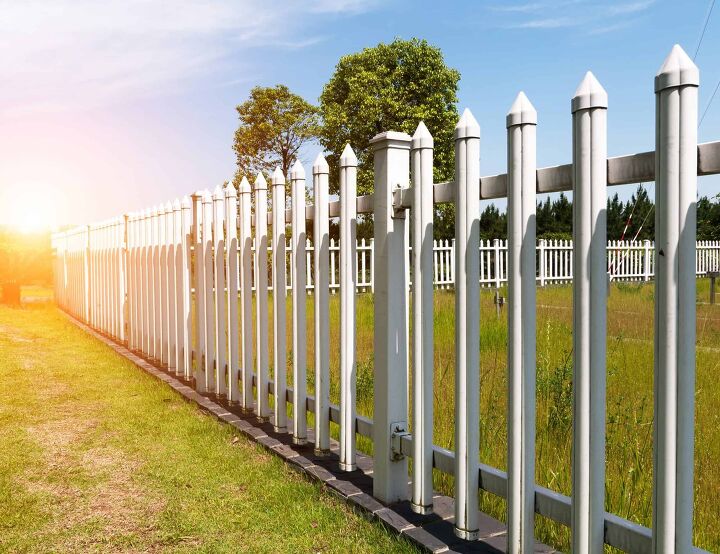Who Gets The Good Side Of The Fence?

A fence can really enhance your property, but it can also cause arguments with your neighbors. Chiefly because many fences are supported rails and posts on one side of the fence and a smooth surface on the other. And this generally means only one person gets the side with the smooth surface often known as the good side.
It is recommended that you install your fence so that the finished side faces out to your neighbors. Some Homeowner’s Association neighborhoods require that the smooth and side faces outwards. However, you can have the finished side facing in so that you can see it if there is no rule in your neighborhood.
In this article, we will discuss the good side and bad side of the fence, and how you figure out who gets the good side of the fence. That way, there are no issues with your neighbors, and you all can live in peace.
Do You Need Fence Installation or Repair Services?
Get free, zero-commitment quotes from pro contractors near you.

The Good And Bad Side
The bad side of the fence is typically an issue with wooden fences. Namely, because the wooden pickets that make the smooth surface of the fence require support. This support is received from posts sunk into the ground at regular intervals joined by wooden slats.
This means that the pickets get screwed onto the slats and posts that cover only one side of the fence. Then, on the other side, the posts and slats are fully visible. Chiefly, this creates the problem, since many people prefer seeing the smooth surface creating a good and bad side.
How To Decide Who Gets Which Side
If you are building a fence and concerned which side should face you and which your neighbor, try these steps:
- Talk to your neighbor: It’s possible your neighbor may not mind or may prefer the “bad” side of the fence.
- If your neighbor does care: Try and suggest splitting the cost. Consider a cap and trim, shadow box, or good neighbor fence. Indeed, this may even save money over building a simple wooden fence yourself.
- If none of these steps work: Consider building a chain-link fence if you want security, not privacy.
- As a last resort: You should ensure no rules govern which side faces out. Then, you can build the fence on your own land the way you please. Although, to avoid frustrating your neighbors, consider a shadowbox fence in which both sides have good and bad parts.
Dispute Over Existing Fence
If the dispute is over a fence that was already built, this gets more complicated as the cost was already sunk. If the fence is a replacement, courts will often look at whether the good side was following the established precedent. However, if not, they may consider what other houses in your area have been doing.
Types Of Fences
There are an infinite variety of ways to construct a fence. Certainly, a great deal of this will have to do with your goals for the fence. Therefore, consider, do you want to build a fence for privacy, security, or just to indicate where your yard starts and ends?
Regardless, we will address some of the most common types of fences:
- Chain link: This fence has no good or bad side, but also adds no privacy. Therefore, you can build it as high as you wish, and add security or not depending on height.
- Wood Fence: Wooden fences are just that, built out of wood. Typically, this means having slats and posts to support a series of pickets that provide privacy and security. Accordingly, these fences have a good and bad side, and this is where the dispute can arise.
- Cap and trim: Cap and trim fences are wooden fences with the pickets sandwiched between wooden slats on top and bottom. Also, they have caps on posts to cover the ends of the wood which protect the vulnerable parts of the wood. In these fences, having a slat in the center is optional, so you can avoid having a good or bad side.
- Post and rail: These are wooden fences, but short and simply put, a post with a few rails connecting them. In general, these fences are decorative and typically installed to show a property boundary.
- Good-neighbor Fence: These fences are designed to either have no good or bad sides or rotate it on set intervals. These encompass many designs, but if there is a dispute, rotating the bad side intermittently may ensure privacy and end the conflict. However, the cost will depend on which of the many styles you choose.
- Vinyl Fence: These fences can be constructed in any style but are constructed of PVC rather than wood. It lowers maintenance costs over time by requiring little maintenance. However, the same dispute with good or bad sides may remain depending on the chosen style.
- Shadowbox: Shadowbox fences alternate with every picket on which side of the fence it is mounted. This means both sides receive the good and bad sides simultaneously.
- Invisible Fence: Invisible fencing is designed to train pets to stay inside your yard. These fences require your pets to wear a static shock collar. You can adjust this collar strength to work as you wish for it to. Buried wires or a wireless transponder tell the collar to administer a safe shock whenever your pets cross the invisible barrier.
Homeowners Associations
Homeowners associations control more than 62,000,000 Americans. These organizations create rules governing what you can do on your home and property even though you “own” it. These organizations require potential homeowners to sign agreements with the organization’s regulations to purchase a home in areas they control.
Homeowners organizations almost always require the good side of the fence to face outwards, at least on the street-facing side. Therefore, make sure that you check with your homeowners association if you are part of one of these organizations.
Laws
Most of the time, laws will not govern which side must face outward, if the fence is on your property. However, if it is on the property line, you and your neighbor typically have an equal say in the fence. If it is on your neighbor’s land, it bears mentioning that typically it is their say.
Exceptions to this are the state of California, where typically both homeowners equally own the fence separating their properties. Also, there are local ordinances covering this in some areas.
So, check whether these govern which side must face outward in the area you live in. While checking the rules, you should find out if a permit is required in your area.
Costs Of Different Fences
Before deciding on a type of fence with a good or bad side, consider your options and their costs. Here are some standard fences and their respective costs:
| Type of Fence | Average Cost |
| Wooden Fence | $3,045 |
| Chain Link | $2,100 |
| Post and Rail | $2,250 |
| Invisible Fence | $760 |
| Shadowbox Fence | $1,650 |
| Vinyl Fence | $2,470 |
| Cap and Trim | $3,540 |
For other types of fencing consider Home Depot or Lowe’s.
Related Questions
Can I paint my side of a boundary fence?
This really comes down to the question of who owns the fence. If it’s on your neighbor’s land, typically no, but if it is on the property line or your own property, usually yes. If it is on the property line, typically, both neighbors own it. This means you and your neighbor are mutually responsible. So, it may be a good idea to check and make sure both of you agree.
Can you see who owns the fence?
The only way to tell who owns the fence by simply looking is to see which way the smooth side faces. Typically, the smooth side faces away from the owner of the fence. Although, this is not always the case.
Do I have to give my Neighbor the good side of the fence?
There is no obligation to give your neighbor the good side of the fence. If you want to be courteous and do so, you may give them the smoother, nicer looking side. However, you don’t have to. They can always ask you to paint and fix up their side.
Do You Need Fence Installation or Repair Services?
Get free, zero-commitment quotes from pro contractors near you.

Our Final Take
Good Fences make good neighbors; this is true and can provide you both with the privacy you need to avoid disputes. However, when building a fence, if there is going to be a good and bad side, try working with your neighbor. It’s a good idea, even if you can’t face the side which way you want. After all, when it is done, you may be able to avoid any more disputes.
Out of respect for anyone involved, it’s a good idea to first start by talking to your neighbor. If they’re impossible to handle, then you can take matters into your own hands. But you should always try preventing a problem before one comes about. It’s easier to prevent a problem than it is to diffuse a difficult situation. Be a good neighbor and communicate first!

I am a writer who enjoys working on home improvement projects. My husband was in the navy, so we moved frequently. This gave me many opportunities to fix up new places. In my spare time, I enjoy reading mysteries and hiking.
More by Lisa Borga











![10 Best Cordless Leaf Blowers – [2022 Reviews & Ultimate Guide]](https://cdn-fastly.upgradedhome.com/media/2023/07/31/9070789/10-best-cordless-leaf-blowers-2022-reviews-ultimate-guide.jpg?size=350x220)

![10 Best Scroll Saws for 2022 [Ultimate Reviews & Buyer's Guide]](https://cdn-fastly.upgradedhome.com/media/2023/07/31/9070684/10-best-scroll-saws-for-2022-ultimate-reviews-buyer-s-guide.jpg?size=350x220)













